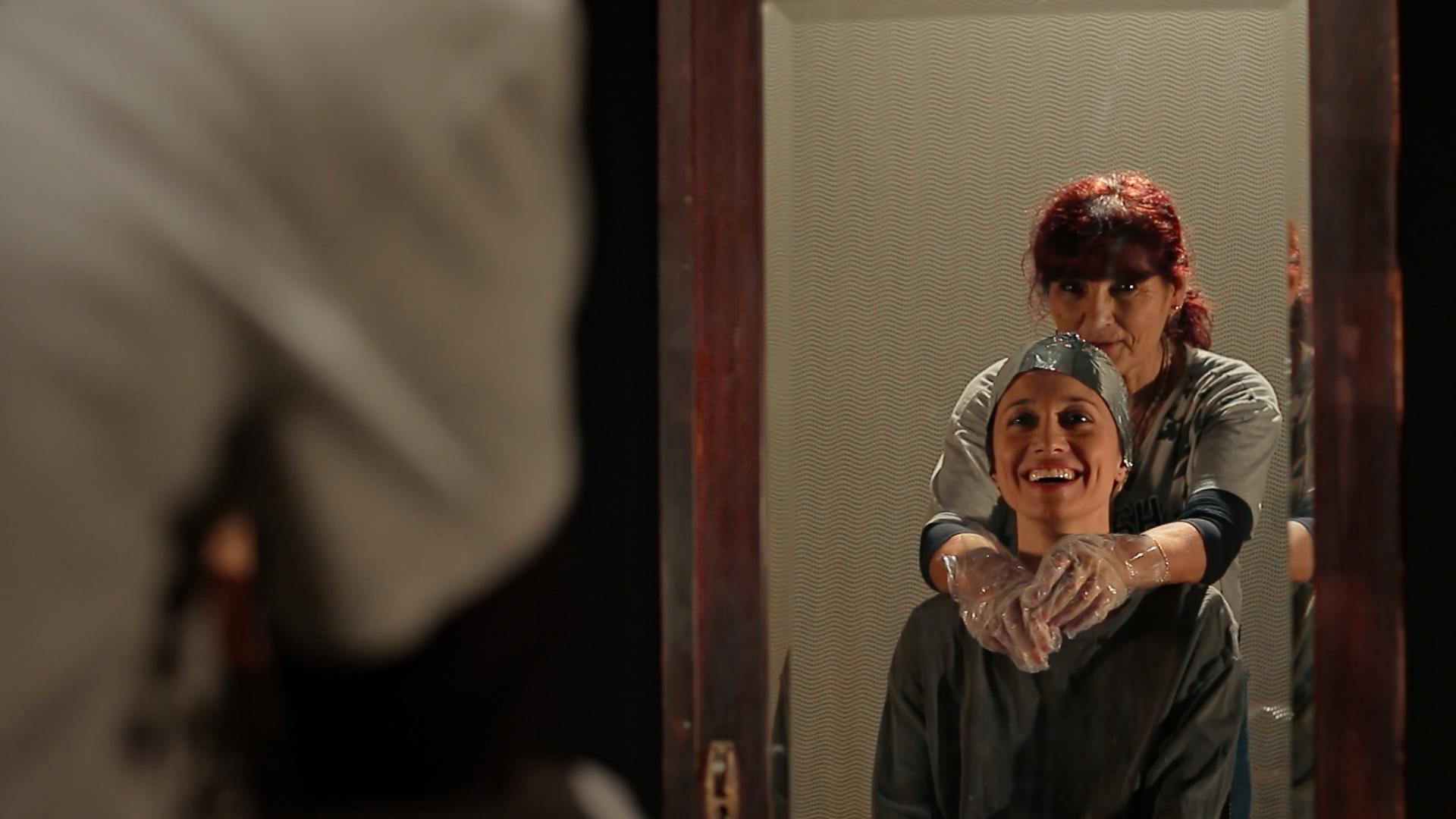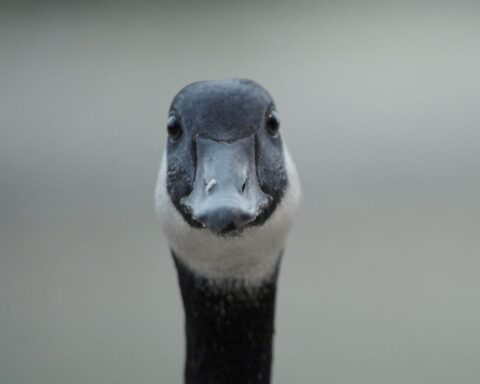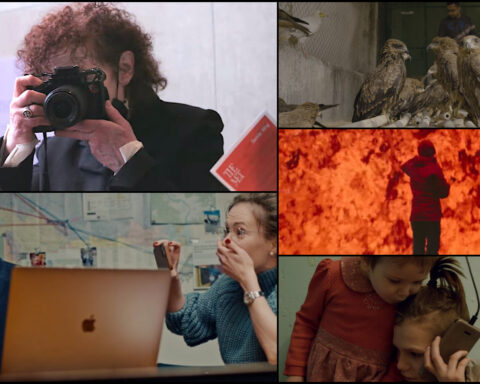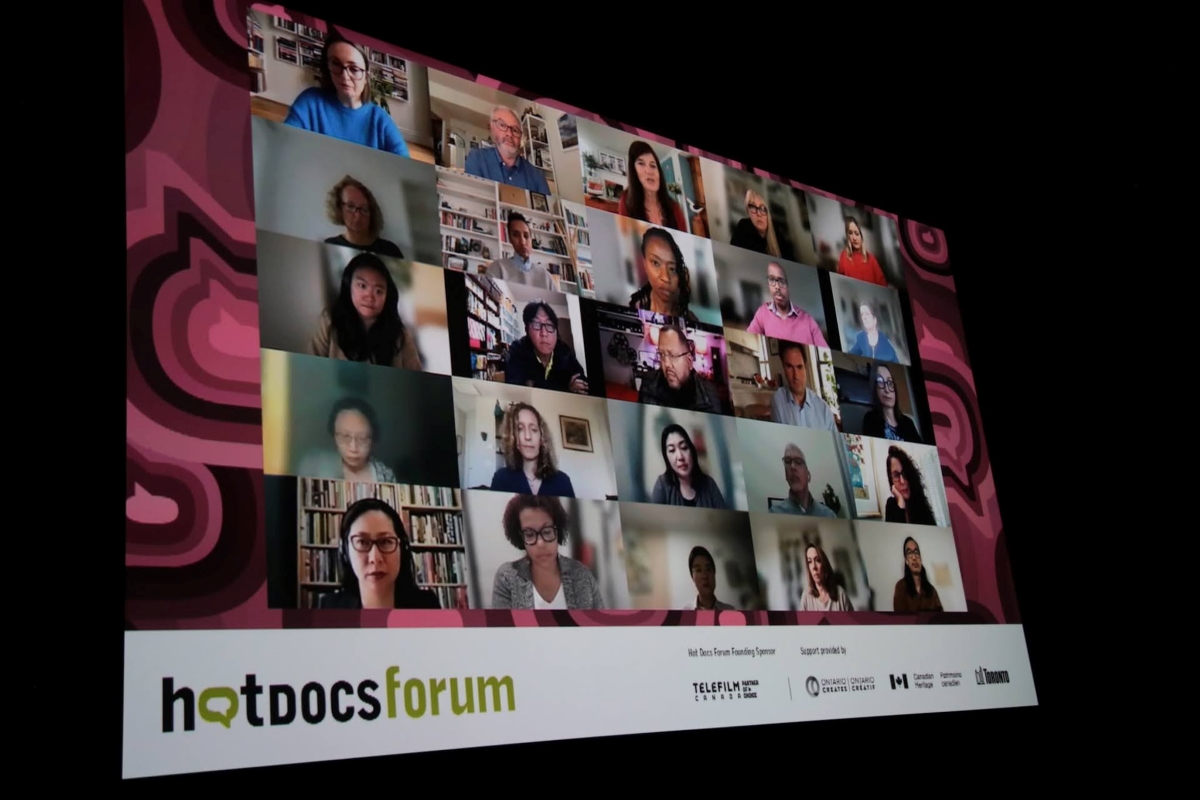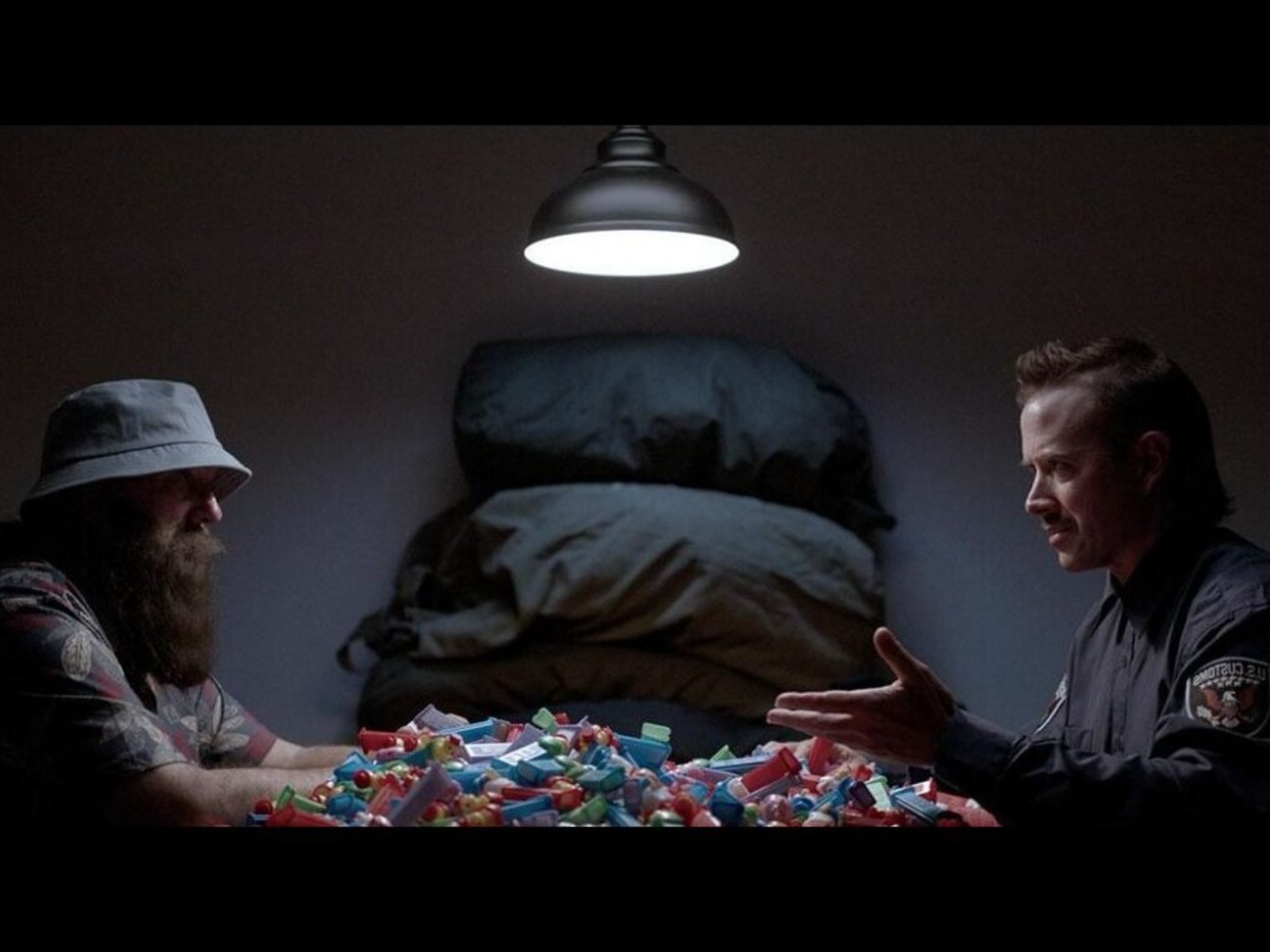Lisbon, Happy and Sad City documents the work of two architect friends, Victor Palla and Manuel Costa, who took over 6000 photos in 1950s Lisbon and made a revolutionary photo book. Described by one talking head as “the great Portuguese neorealistic they couldn’t make,” the film discusses the richness of their photographs and, more specifically, the forward-looking graphic design of the book itself. It was not just a book of photography but a visual poem, and the pages were not just lined with descriptions of scenes and techniques but were also adorned with the prose of Portuguese poets.
Attending Indielisboa, one discovers that many of the documentaries programmed are infused with poetry. Sometimes literally as in Lisbon, Happy and Sad City and another film from the national selection, Behind Those Walls, but also more figuratively in documentaries that use form and avant-garde techniques to evoke emotional and thematic truths, foregoing more traditional narrative progressions.
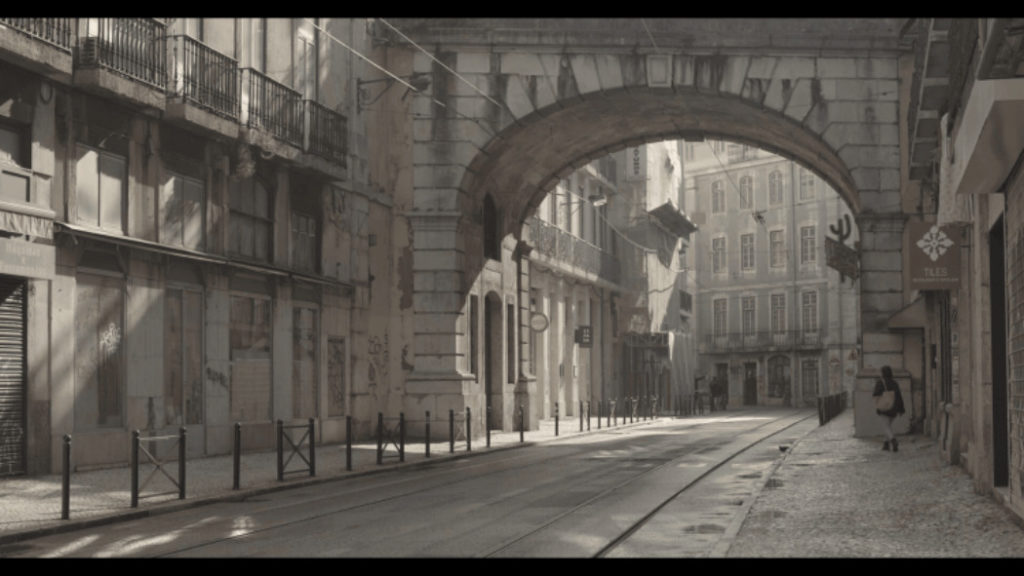
Behind Those Walls, the latest film from Portuguese filmmaker Manuel Mozos, offers a treatise on isolated spaces, blending images of contemporary ruins with poetic and epistolary dialogue. Contemporary images of ruined asylums, prisons and quarantine hospitals are occasionally interrupted by archival footage. Some quotes reflect the experiences of those directly impacted by those spaces, such as a daily meal plan for tuberculous patients. Other quotations borrow from the wider world, such as a late movie invocation of a 15th-century Spanish nun, Teresa of Avila, known for her ecstatic visions.
Deep melancholia infuses these spaces as they seem to take up the mantle of Portugal as a lost nation, the poor prince among the European colonial powers. Amidst the ruins, voices muse about the “soul” needed to rebuild all of Portugal. The literal walls of spaces extend to more symbolic ones. What does it mean to be born into a nation with its ancient traditions, laws and history? What does it mean to be born into a body that will eventually fail you? In many ways, the film feels like a reflection on what is left behind once we are gone. Given director Mozos’s documentaries preserving voices and stories from Portuguese film history, Behind Those Walls lingers on the question of legacy. Will cinema even survive another century?
In a much different reflection on aging, there’s a short film in the Silvestre program, How Do You Measure a Year, which is a film made by a father (Jay Rosenblatt, When We Were Bullies) about his daughter, Ella. Once a year, Rosenblatt asks her questions about her views of the world, herself and their relationship. The film has the warm glow of a home movie but with the polish of a documentarian attuned to framing and sound.
The film transcends the personal in the structure and also the evolution of moods and faces. Some years, like Ella’s 14th birthday, she broods on the couch and only wants to sleep. Others, she’s bright and reflective. She often sings, and the tone in her voice from one year to the next changes in both treble and tenor. It’s a portrait not only of a face and a body but an evolution of ideas and capacities. Most of all, it’s a portrait of love: a devotional and collaborative project between family members, giving and taking in equal measure. While there is a thread of melancholia invoked by how quickly we age and leave behind childhood, the film feels more like a celebration of the ephemeral nature of living.
Presented in the same program as How Do You Measure a Year, Sara Cwynar’s Glass Life pushes the boundary of documentary. The film’s title refers, both technically, to the use of glass to construct the film’s images but also to the lives we live online. Structured around quotes and passages from a wide range of sources (much like Mozos’ docs), Cwynar’s film is a kaleidoscopic poem about visual archives we create and maintain. Cwynar’s form liberates her filmmaking and the audience from preconceptions about what documentary means. What is art in the age of reproduction? What does the promise of fascism, to be a part of something bigger than yourself, mean within fragmented and self-perpetuating online lives?
While adopting a radically different aesthetic and narrative approach, Miryam Charles, with her feature-debut This House (Cette maison), similarly tests the lines of the documentary. The movie tells the story through recreations and narrative sequences of Charles’s cousin, who died in 2008. Charles invokes the emotions of this moment through play-like scenes unfolding on sets against a black backdrop. At times brimming with life, an interior garden wilts and fills the living room with dried-out leaves and dead flowers. Theatricality gives way to the possibilities of cinema, as voices and light interplay to bring back Charles’s memories and give her cousin a life after death. It’s an astonishing work, particularly within Canadian cinema, where national organizations rarely take risks on such formal and abstract works. Like many of the documentaries at Indie Lisboa, the film reflects on the nature of memory and truth and cinema’s power and insufficiencies in capturing those nuances.
In that spirit, one of the most celebrated films from the festival was the feature-debut from Portuguese filmmaker Jorge Jácome, Super Natural. The film, classified in the program notes as an experimental-documentary-fiction, takes the perspective of alien-like creatures that speak an alien language (often translated through subtitles) and are physically embodied by colours. Much of the action on-screen involves a cast of non-actors exploring the island of Madeira. The use of rhetorical questions and the title’s suggestion which questions the nature of self and identity within an increasingly unnatural world seems to suggest that in a fictionalized world shaped by algorithms, the natural world (us included) is increasingly alien and/or supernatural. The film almost seems to suggest a post-reality, where humanity and its stories no longer shape our understanding of truth.
Overall, the IndieLisboa documentary programming pushes against preconceptions as it offers challenging and poetic explorations of memory, nature and environments. Ranging from more conventional talking-head documentaries to films that challenge the form of documentary entirely, the programming looks forward to new voices and reflections on our ever-changing world.




